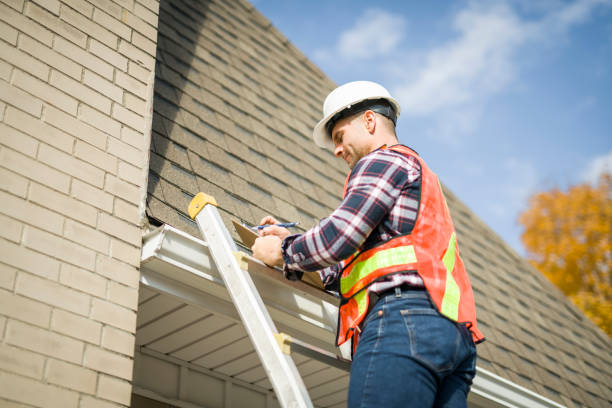Your roof needs just as much attention as heating systems and windows before winter. Inspect it thoroughly before temperatures drop and snow accumulates.
Acting now prevents minor issues from becoming expensive emergencies when ice and snow add stress to your roofing system. A proactive approach to residential and commercial roof repair saves money and protects your home from water damage, structural problems, and energy waste during the coldest months ahead.
Critical Roofing Problems To Watch For Before The Snow Falls
Snow and ice can worsen even minor roof damage, escalating small issues into major failures. Identify and address these key problems now:
- Compromised flashing around chimneys and vents – Metal strips that seal roof penetrations develop gaps over time. Water sneaks through these openings, and freeze-thaw cycles expand the damage exponentially once winter starts.
- Granule loss on asphalt shingles – Check your gutters for excessive granules, which look like coarse sand. Shingles losing their protective coating become vulnerable to ice damage and lose their ability to shed water effectively.
- Sagging sections or dips – These depressions collect water and snow, creating pools that freeze and refreeze. The weight concentrates in these areas, leading to structural failure during heavy snowfall.
- Damaged or missing shingles – Wind and summer storms tear shingles loose or crack them. Each missing shingle creates an entry point for moisture that ice dams will mercilessly exploit throughout winter.
- Clogged or damaged gutters – Gutters filled with debris can’t channel water away from your roof. When temperatures fluctuate, this standing water can freeze, creating ice dams that force water under your shingles.
- Cracked rubber boots around roof penetrations – Plumbing vents and other protrusions use rubber seals that crack and deteriorate with age. These small failures allow water infiltration that accelerates when ice forms.
- Deteriorating soffit and fascia – The boards along your roofline protect the roof’s edges and interior structure. Rot or damage here allows animals to nest and moisture to penetrate before snow adds insulation that hides the problem.
- Inadequate attic ventilation – Poor airflow causes heat to build up and escape through your roof, melting snow unevenly. This creates the perfect conditions for ice dams that damage shingles and cause leaks.
- Tree branches hanging over the roof – Overhanging limbs scrape shingles during windstorms and drop leaves that clog gutters. When loaded with ice and snow, these branches can break and crash through your roof.
- Cracked or damaged flue caps – Chimney caps prevent water from entering through the top of your chimney. Damage here allows moisture inside the masonry, where freezing temperatures cause cracking and deterioration.
Opt For Professional Inspections To Catch Hidden Roofing Problems Before Snow Falls
DIY inspections help identify obvious issues, but certified roofers catch problems that untrained eyes miss. Vanity Roofing professionals use specialized equipment to test for hidden moisture, evaluate structural integrity, and assess the remaining lifespan of your roofing materials. They spot subtle warning signs, such as microcracks in flashing, early-stage rot in decking, and inadequate sealing around skylights.
Schedule a professional inspection before winter arrives to ensure peace of mind. Take action now to address potential issues while repairs are still manageable and protect your home from avoidable winter damage. Contact a reputable roofing expert to book your inspection and secure your roof before the snow falls.
Published by HOLR Magazine.


